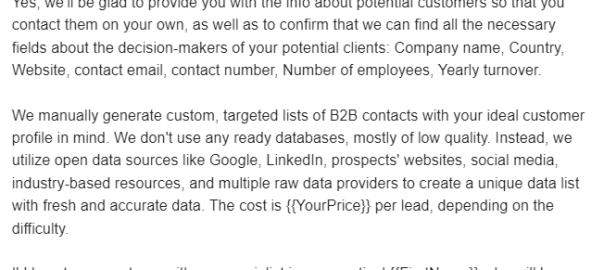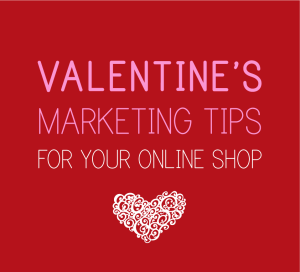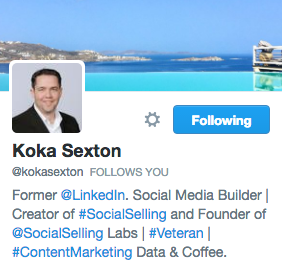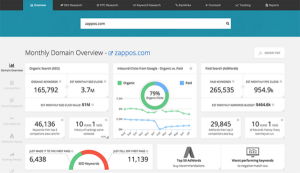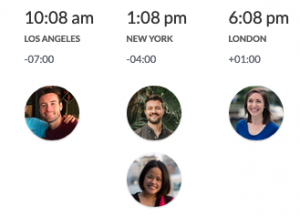Little email things — like signature, subject lines and how to personalize — have a big impact and are easy to overlook.
Inboxes are overflowing and attention spans are shrinking. Crafting emails that resonate with your audience and drive conversions is more challenging than ever. To stand out and build lasting connections, you’ll need to make them as personalized as possible.
At the same time, repetitive tasks can take 10 or more hours per week. No wonder many companies go for automation. Even if you go this way, mind that it’s important to keep a human touch in your marketing and sales communications while optimizing your processes. Yet, sometimes it takes a lot of failures before you find the right balance.
That said, it’s a good time to go over five basic steps to automate routine tasks and which can boost engagement with your leads. Even though they are obvious, it’s easy to overlook one or more of them.
1: Set up your mailbox
Think about how you as a sender are perceived. Make sure your message looks professional, and your mailbox won’t be blocked by email service providers (ESPs). Here’s how:
Use the “normal” email name
Ditch the generic “no-reply” addresses — they scream automation and do little to inspire trust. Choose a regular business name for your mailbox instead. It both enhances the human touch and positively influences email deliverability algorithms.
 adam.smith@google.com
adam.smith@google.com
 john.doe@salesforce.com
john.doe@salesforce.com
 no-reply@google.com
no-reply@google.com
 hello@salesforce.com
hello@salesforce.com
Ensure a professional signature
Your signature is your digital business card, so make sure it reflects your brand and personality positively. Include your full name, title, company name and contact information. Also, here are two nuances:
If these are marketing or warm emails, don’t be shy and add your photo, as well as any relevant awards or badges that prove your expertise. You can even provide the link to your website.
This is an example of doing it right:
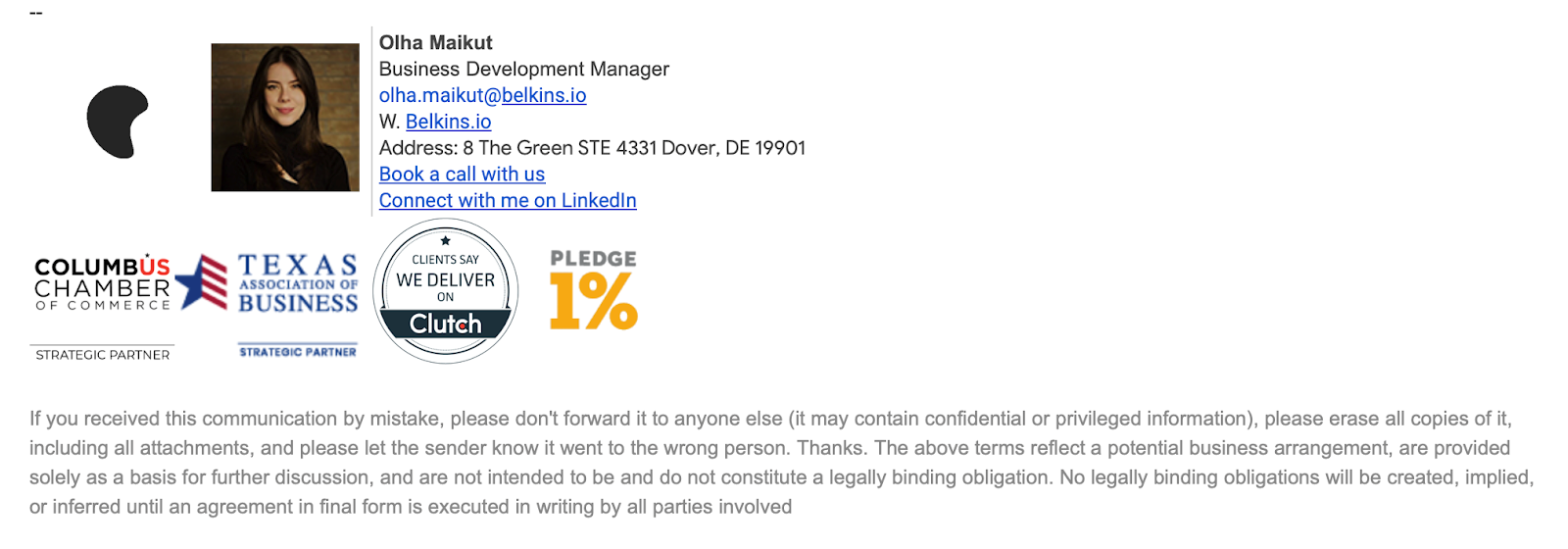
In this case, having only your name, title and company name would be too anonymous.
However, with cold emails avoid images, links and HTML signatures, as all these impact deliverability. In the best-case scenario, your emails will land in Promotions or Updates. In the worst case — in the spam folder. You can try it for smaller mailings under 2,000 leads, but I’d recommend being careful with that. So, images and links are generally a no-go, but contact information is fine.
Configure the mailbox
The technical setup is extremely important to get your emails to your client’s inboxes. If you want to improve your email deliverability rate, you need to gain the trust of email service providers.
To authenticate your domain, configure four basic records:
- Sender Policy Framework (SPF)
- DomainKeys Identified Mail (DKIM)
- Domain-based Message Authentication, Reporting, and Conformance (DMARC)
- Brand Indicators for Message Identification (BIMI)
Warm it up
Warming up means slowly increasing the amount of messages you send from one email address. This builds up your sender reputation and helps you avoid spam filters. I recommend starting with no more than 200–300 recipients at once and checking your ESP’s sending limits.
2: Grab attention with subject lines
Your subject line is your first impression, so make it count. Use strong verbs, specific keywords and personalization to pique your audience’s curiosity and entice them to open your email.
Also, around 30 characters from the email itself are visible along with the subject line in the inbox. That’s why you should make sure the first few lines of the email match the subject line and continue the story.
Here are two examples of the good subject lines.
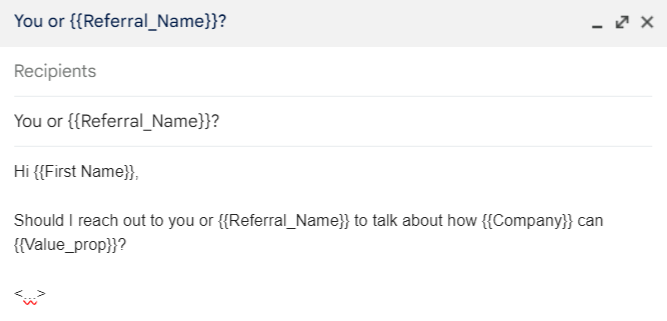
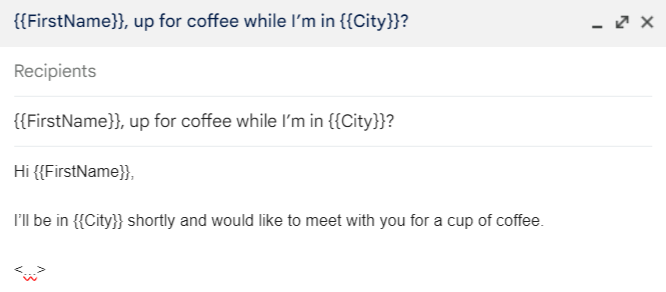
3: Mention pain points and offer solutions
Go beyond generic greetings. Research to understand your prospects’ individual needs and pain points. This allows you to tailor your message accordingly, offering solutions that directly address their specific challenges.
When you mention the real pain points your audience faces, you instantly demonstrate you understand their needs and position yourself as a potential solution provider. For example, if you’re offering to replace their current CRM, find out what is wrong with it and build your value prop based on that. Here’s how:
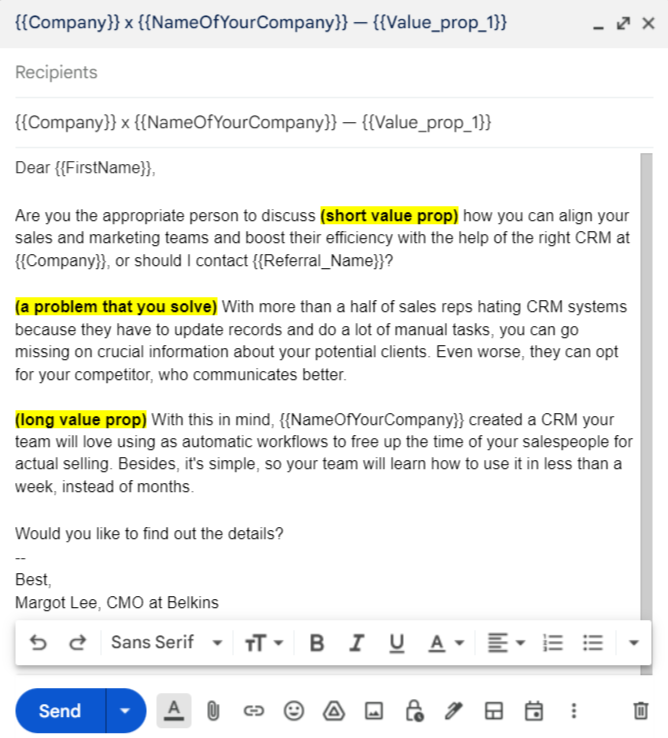
Though such personalization is a winning strategy, don’t forget about scalability. If you dig too deep into your research, you’ll spend a few hours to find a prospect. That’s why you should strike a balance between personalization and scalability. Here’s another example of a reply to an inbound request from our website:
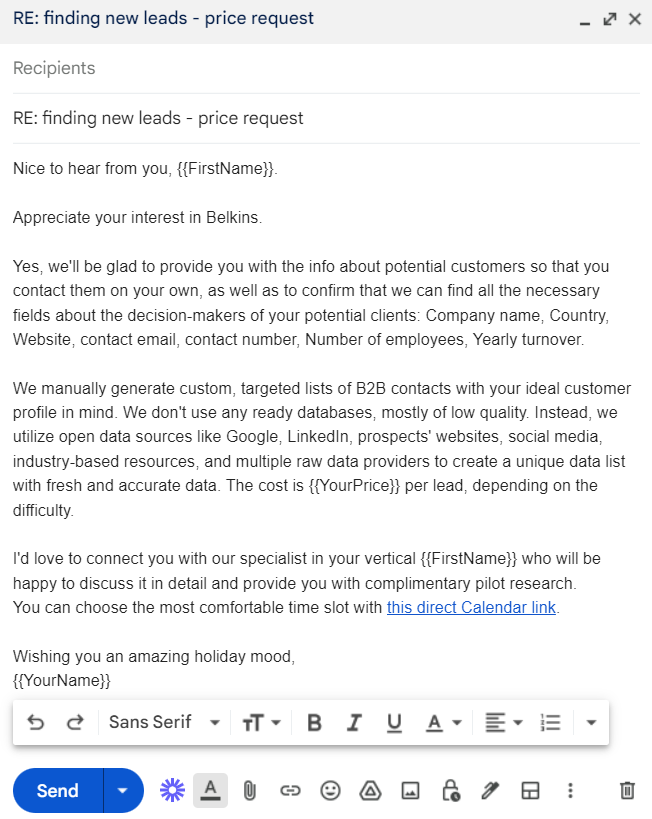
Finally, you can use email triggers and segmentation to automate repetitive tasks while ensuring your messages retain a human touch.
4: Provide relevant sales and marketing content
This is more about follow-up emails, but don’t just send generic sales decks. Tailor your content to the individual recipient based on their needs and interests. Take the time to understand their context and what they want to achieve.
Only after that, consider sending a case study, a client testimonial video, or a blog post that directly addresses their pain points and showcases your expertise. It can look like this:
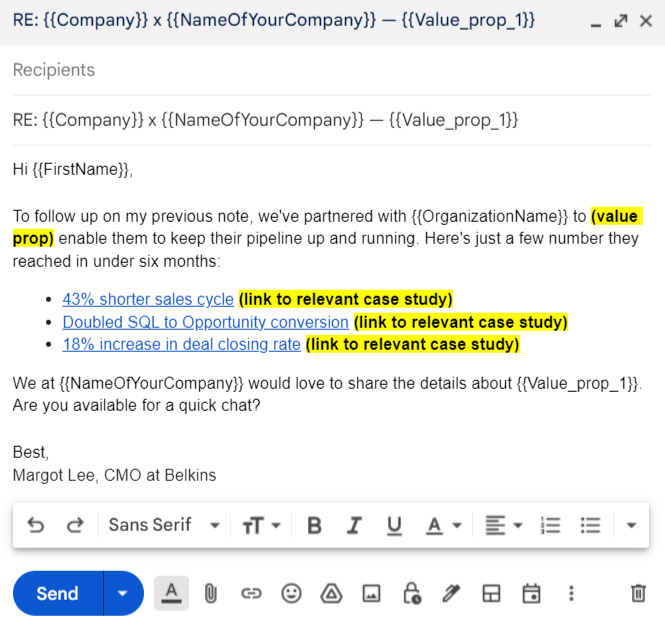
This allows you to provide the most relevant and valuable information, increasing the chances of engagement and conversion.
5: Timing and frequency
Find the sweet spot for email frequency. Sending too many emails can overwhelm your audience and backfire.
A study revealed that two follow-ups are the most effective in terms of responses, while a third reminder drops the reply rate by 20%. It also found that waiting three days before following up results in the highest increase in response rate — up to 31%. At the same time, you’d better not delay your next email longer than five days.
Yet, these numbers differ across industries. So, it’s better to experiment with different sending intervals and track engagement metrics to determine the optimal frequency for your list. Further on, you’ll even be able to prepare some canned responses and trigger such messages automatically.
To sum it up, use automation to streamline workflows, not to replace human connection. While automation can handle repetitive tasks like scheduling emails and managing lists, it should never replace the need for personalized communication.
The post Email marketing 101: The five basics appeared first on MarTech.
(21)
Report Post